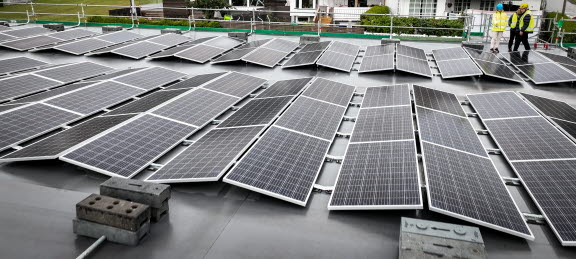EU's New 2030 Target for Renewable Energy
As part of the EU's green commitment to reduce net greenhouse gas emissions by at least 55% by 2030, making buildings more energy efficient is an essential part. According to the European Commission, buildings account for 40 % of our energy consumption and 36 % of greenhouse gas emissions. Almost 75 % of existing buildings in the EU are energy inefficient and will require energy renovation on a large scale.
In order to ensure a green and renewable energy source for buildings, the use of, among other things, solar cells will be crucial. Renewable energy emits less carbon dioxide than fossil fuels and is generated from free and abundant natural resources.
Increasing the share of renewable energy used in the EU is essential to:
- reduce greenhouse gas emissions from the energy sector - currently 75% of all EU emissions
- provide an alternative to fossil fuel imports, especially from Russia
The EU has set a new 2030 target: 42.5% share + 2.5% top-up. Construction is one of the sectors with a sector-specific sub-target, 49% share of renewable energy (indicative target)
“A transition to renewable energy will make a difference to costs related to building for both public bodies and individuals. In addition, renewable energy improves air quality and human health”, says Line Brødremoen Brevig, Sustainability Manager, Protan.

Solar Panel Efficiency with Protan membranes
Protan has solutions for use in connection with solar panels both for new constructions and rehabilitation of older buildings.
It is documented that solar panels increase electricity generation when not over heated. Therefore, it's important to use roof coverings that help the solar panels stay cool when building a rooftop solar system.
Protan waterproofing membranes in light colours made of PVC or TPO have this cooling ability. For example, Protan SE in white reflects 0.84 of the solar radiation (0.68 after three years of aging). This usually keeps the temperature of flat roofs in summer around 50°C, compared to 70-80°C for darker colours.
This greatly increases electricity generation from solar panels; some pilot studies even show almost twice as much output (Over Easy). Also, our PVC and TPO roofs can resist root penetration and have passed the German FLL test. This shows that our roofing membranes are suitable for functional roofs that combine solar panels with a green roof installation.
Read more: https://www.protan.com/roof-systems/solar-roof/


